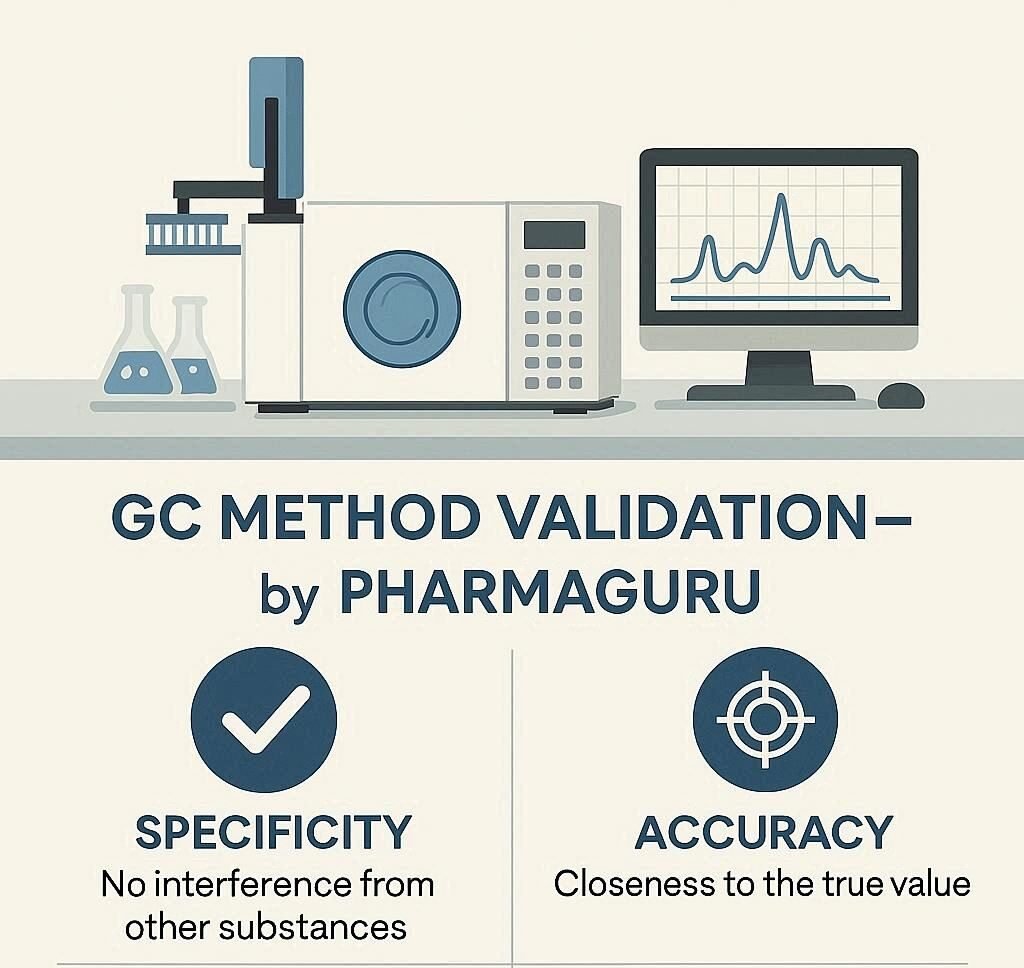GC method validation for impurity analysis ensures the gas chromatography method is reliable and suitable for accurately, precisely, and specifically quantifying impurities in a sample Gas Chromatography (GC) plays a crucial role in controlling volatile impurities in pharmaceuticals. In this article, I will discuss how GC methods are validated for the quantitative determination of impurities […]
GC method validation for impurity analysis ensures the gas chromatography method is reliable and suitable for accurately, precisely, and specifically quantifying impurities in a sample
Gas Chromatography (GC) plays a crucial role in controlling volatile impurities in pharmaceuticals. In this article, I will discuss how GC methods are validated for the quantitative determination of impurities in pharmaceutical substances.

Major Takeaway: GC method validation
Yes, GC detect the volatile impurities
To validate a GC method, you assess key parameters like specificity, accuracy, precision, linearity, limit of detection (LOD), limit of quantitation (LOQ), robustness, and system suitability. This confirms the method reliably and consistently measures impurities as intended, following guidelines like ICH Q2(R1).
Gas Chromatography is widely used for the analysis of volatile and semi-volatile organic compounds. It offers high sensitivity, resolution, and selectivity, making it ideal for detecting low levels of organic impurities in complex pharmaceutical matrices.
Some typical impurities that GC is used to detect include:
Method validation is governed by international guidelines such as ICH Q2(R1), which outlines the parameters that must be evaluated to demonstrate that an analytical method is suitable for its intended purpose.
You May Like
Here’s a breakdown of the critical validation parameters applied when validating a GC method for impurity determination:
The method must clearly distinguish impurities from the active pharmaceutical ingredient (API) and excipients. Baseline separation of peaks is essential.
A linear relationship must be established between concentration and detector response. Typically, five concentration levels are tested, and the correlation coefficient (R²) should be ≥ 0.99.
Accuracy is assessed by recovery studies, often by spiking known amounts of impurities into the sample matrix. Acceptable recoveries usually fall within 95–105%.
This includes:
These are critical for trace-level impurity detection. They can be calculated based on the signal-to-noise ratio:
Small deliberate changes in parameters (e.g., carrier gas flow rate, injection volume, oven temperature) should not significantly affect the results.
Before sample analysis, the system must meet predefined criteria such as resolution, tailing factor, and theoretical plates.
| Challenge | Solution |
|---|---|
| Co-elution of peaks | Optimize temperature programming and column selection |
| Poor sensitivity | Use concentration techniques or more sensitive detectors (e.g., MS) |
| Matrix interference | Apply sample cleanup or derivatization |
| Instability of impurities | Ensure sample stability and proper storage conditions |
Objective:
Validate a gas chromatography (GC) method for quantifying Class 2 residual solvents (e.g., methanol, dichloromethane) in Paracetamol (acetaminophen) active pharmaceutical ingredient (API), per ICH Q3C guidelines.
Method Summary:
Validation Parameters and Results:
| Parameter | Result |
|---|---|
| Specificity | No interference from API; baseline separation of all solvents achieved |
| Linearity | Linear from 10–500 ppm; correlation coefficients (R²) > 0.999 |
| Accuracy | Recovery between 97–103% across concentration levels |
| Precision | %RSD < 2% for repeatability and intermediate precision |
| LOD / LOQ | Methanol: LOD = 5 ppm, LOQ = 15 ppm; all solvents within acceptable limits |
| Robustness | Minor changes in oven temperature and flow rate did not impact results |
| System Suitability | Resolution > 2.0; %RSD of peak area < 2% for standard injections |
Result discussion:
The validated GC method is accurate, precise, and sensitive for detecting residual solvents in Paracetamol API, and complies with ICH Q2(R1) and Q3C guidelines. It was successfully implemented for routine quality control.
Validating a GC method for impurity analysis is a critical step in pharmaceutical development and quality assurance. A well-validated method not only ensures product safety and regulatory compliance but also provides confidence in the analytical data used to support product release and stability studies.
As impurity limits continue to tighten under global regulatory scrutiny, robust and reliable GC methods are more important than ever.
Quick Links